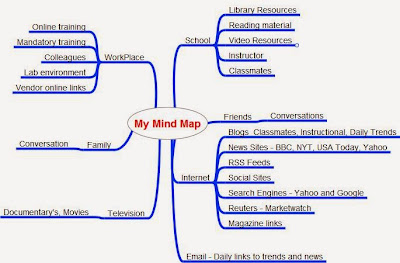People take in information and process it in different ways, ways that are meaningful to them personally. So, understanding the different theories, strategies and styles of learning is an important part of an instructional designer’s role so they can design effectively. As part of this program we were introduced to the following concepts and theories: Neuroscience and Information Processing, Cognitivism, Behaviorism, Constructivism, Social Learning, Adult Learners, Connectivism, Learning Styles and Learning Strategies. But, just knowing the different theories is not enough, it also has to be understood that no one theory fits a learner, so the learner and the learning environment has to be considered along with the subject that is being taught, so any one learner could use multiple theories depending on the situation. Before taking this program I never knew there was so much information to consider when designing a curriculum.
Personally, the material presented as part of this program has helped me understand my own learning needs. As an adult learner I have chosen to pursue further education, to grow as an individual and to satisfy the requirements of becoming an instructional designer. The goals and long term plans that I have set for myself, keep me motivated. Motivation is another important aspect of learning, “To learn effectively, you not only have to have the cognitive processes that enable you to learn effectively and to remember it effectively; you also have to want to learn it. And that’s where motivation comes into the picture” (Dr.Ormrod, 2009) . Dr. Ormrod goes on to mention four psychological needs that have implications on motivation that instructional designer’s should understand; cognitive stimulation, self-determination, competence and relatedness.
This course has provided me with the tools necessary to begin to understand how to meet the learners’ needs, to know when to incorporate the different theories and styles, and how to keep learners motivated through various techniques including the use of emerging trends in technology.
Dr.Ormrod, J. (2009). Motivation in Learning. Laureate Education, Inc.
